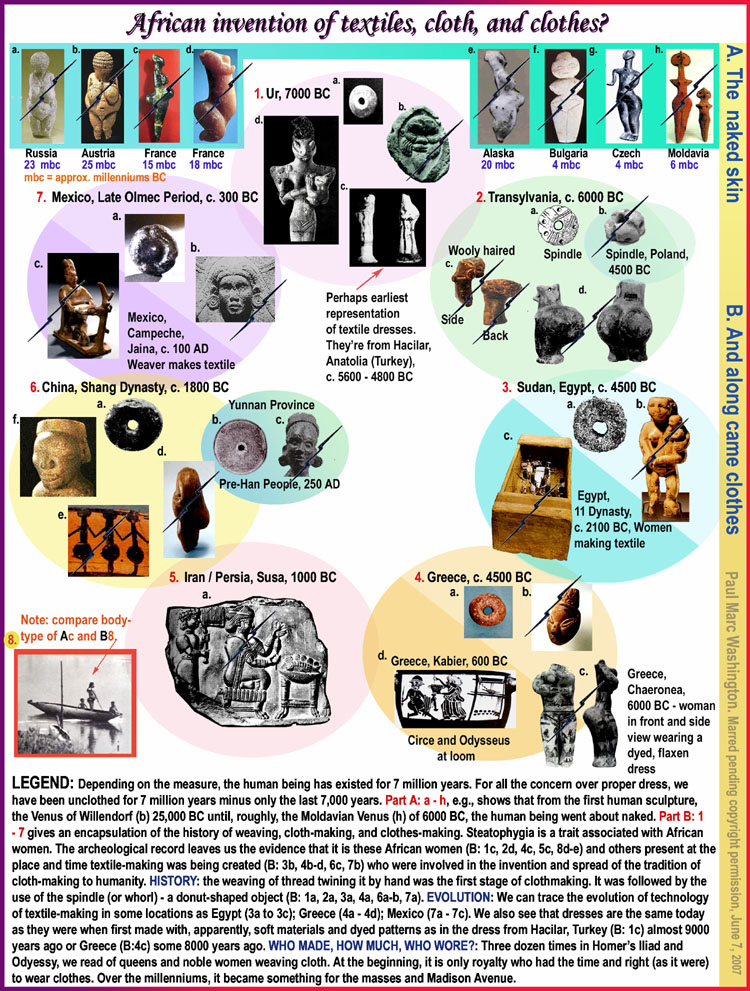
Verified weaving of nets, cloth, and baskets dates back 27,000 years ago. And link directly below identifies that population as African. Backup Click.
Alexeev Harvard Lectures on African remains in Russia from 27,000 years ago. Alexeev backup. INDEX TO ALL LECTURES: Alexeev Harvard Lectures.
Is the tradition of sewing found around the world an example of a single worldwide culture (that accompanied it) with a seemingly common point of origin that became dispersed? Consider these six material markers or "artefacts" comprising a common kultural toolkit in the ages largely preceding what we call history:
1) God created the heavens and earth: paleolithic to today: click.
2) Shamanism: paleolithic to today: click.
3) First cloth in world through neolithic spindles, whorls: Click.
4) Diadems as first crowns 25,000 years ago through historic times: click.
5) Rock art 1 - from 25,000 years ago until today: click.
6) Rock art 2 - red and black human figures in Africa and Eurasia: click.
7) Common hair care products – the comb: click.
8) Pyramids: click.
9) Neolithic pottery burials: click.
10) Board games part 1: click.
11) Board games part 2: click.
12) The dug-out canoe: click.
13) The plank boat: click.
14) The Adze: click.
15) 11 points of contact in ancient AfroEurasia: click.
THE GOLDEN AGE OF THE AFRICAN: The Golden Age of the African, Part 1. The Golden Age of the African, Part 2.